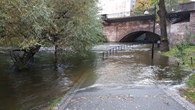The WCRP Digital Earths Lighthouse Activity and Earth System Modelling and Observations (ESMO) Core Project are jointly convening a workshop to bring together all relevant communities interested in ultra-high-resolution modelling.
There is an opportunity for remote participation on October 5th 2022. You can register for an online breakout session here: https://forms.gle/L58Jt5toSU8eVzM29
The workshop will be in person from October 3-7, 2022 at the National Center for Atmospheric Research (NCAR) in Boulder, CO, U.S.A. The talks will be recorded and we are making available a pair of virtual breakout sessions to serve participation in different time zones, to be conducted on Wednesday, October 5th 2022 for 1.5 hours each.
This workshop is motivated by the urgent need for improved climate information and the major advantages and scientific potential of ultra-high-resolution climate modeling.
The intended outcomes include the establishment of a global research network with expertise in ultra-high-resolution (kilometer-scale or finer) global and regional Earth system modelling including its individual components. The workshop outcomes will be documented in a white paper.
For those who still want to submit an abstract and register for in person participation, please go to the workshop website for more information:
https://www.mmm.ucar.edu/events/2022/wcrp
● Abstract submission deadline: September 14, 2022
● Registration deadline: September 20, 2022
If you would like to participate in an online session answering the same questions as the onsite participants please sign up at the link above (https://forms.gle/L58Jt5toSU8eVzM29). We look forward to hearing your contributions!
Best regards
The organising committee

